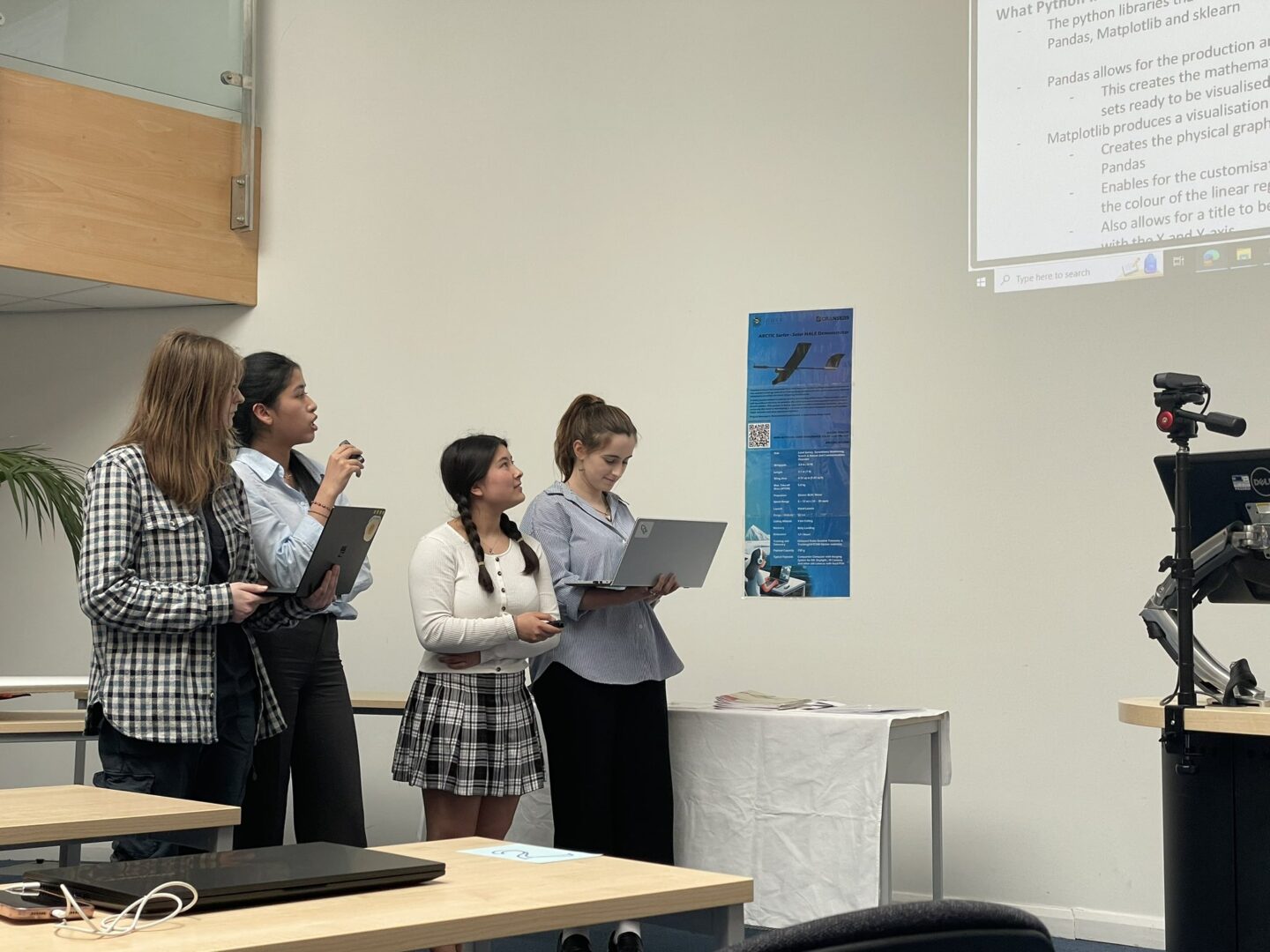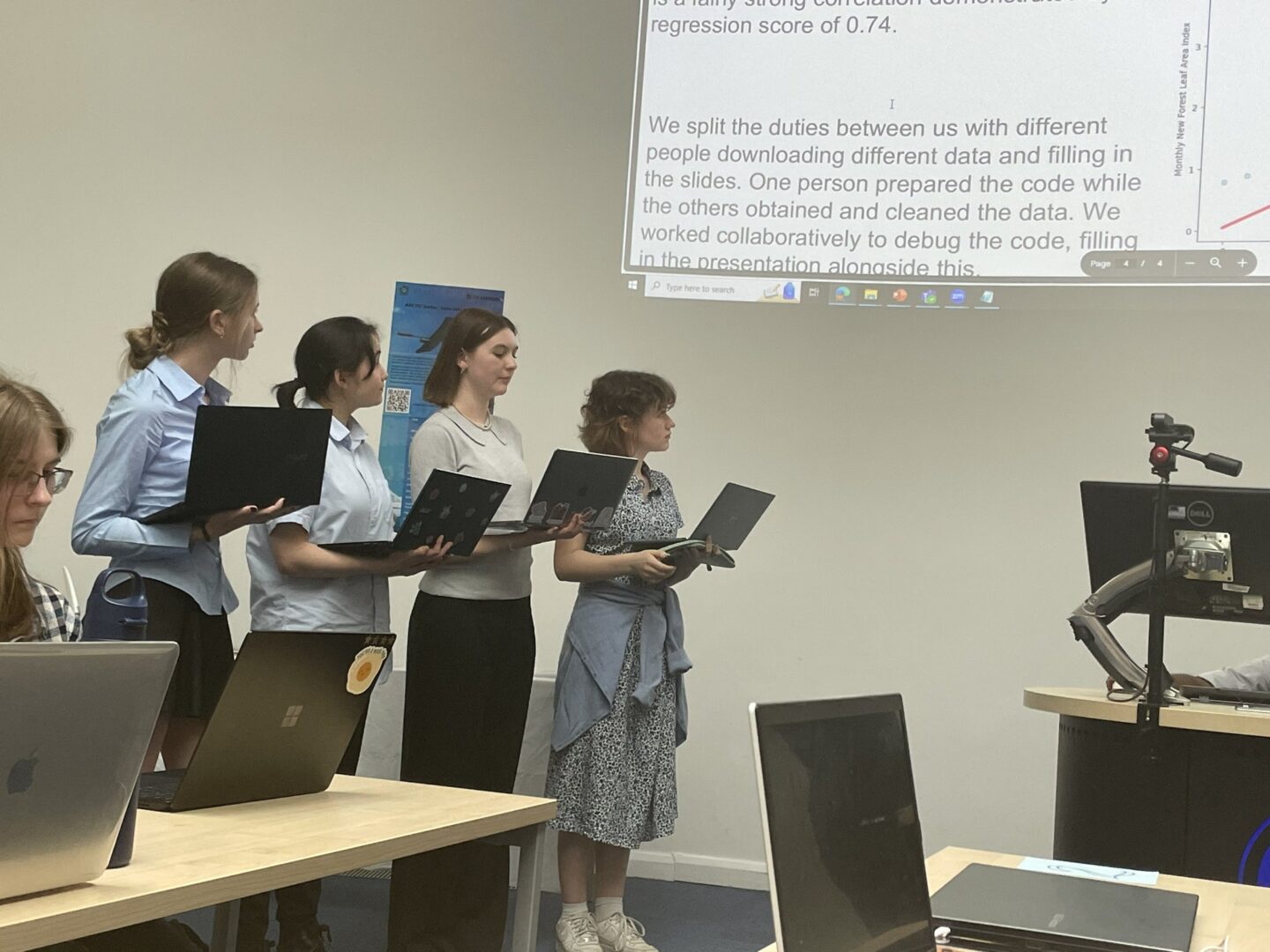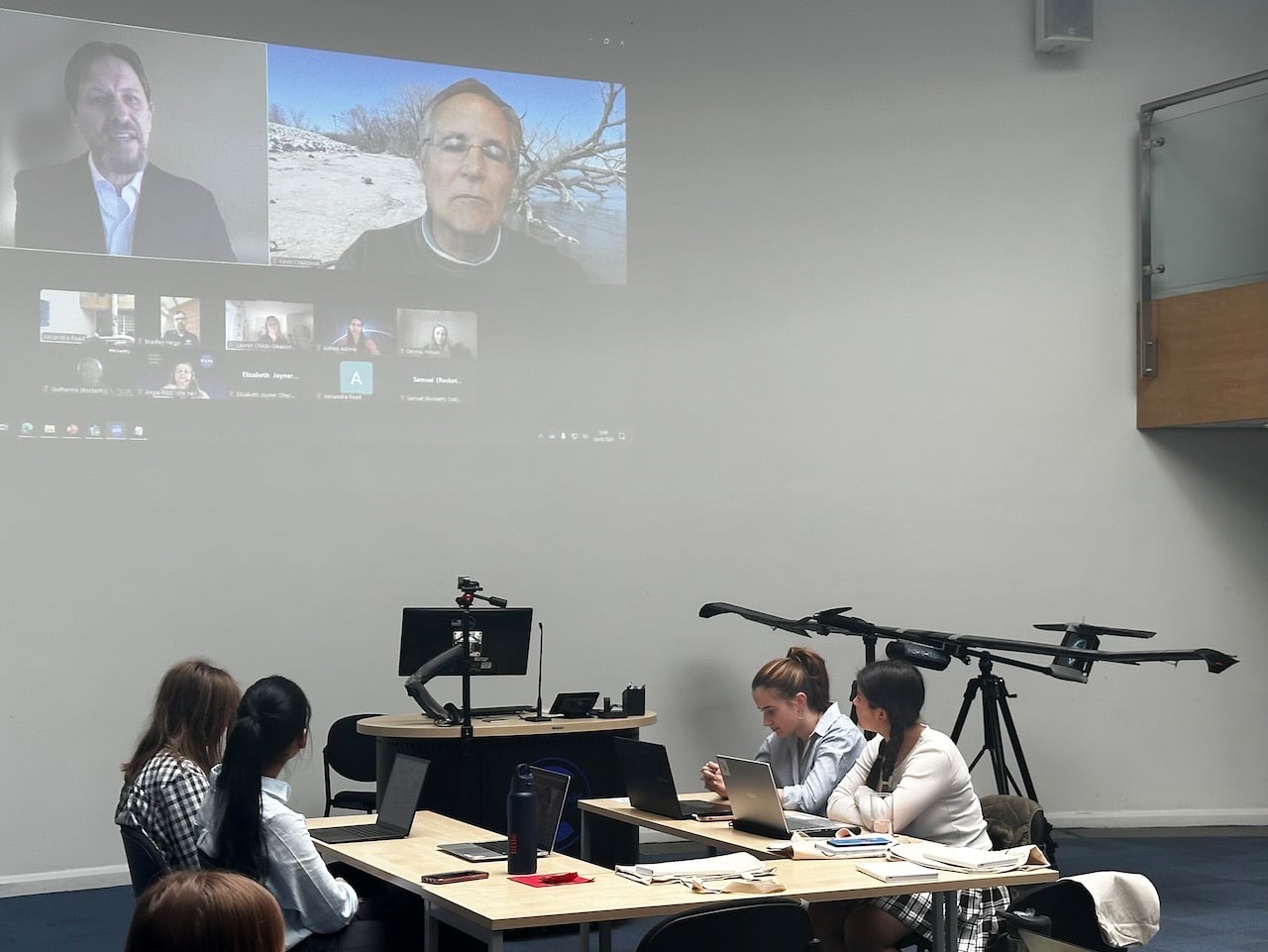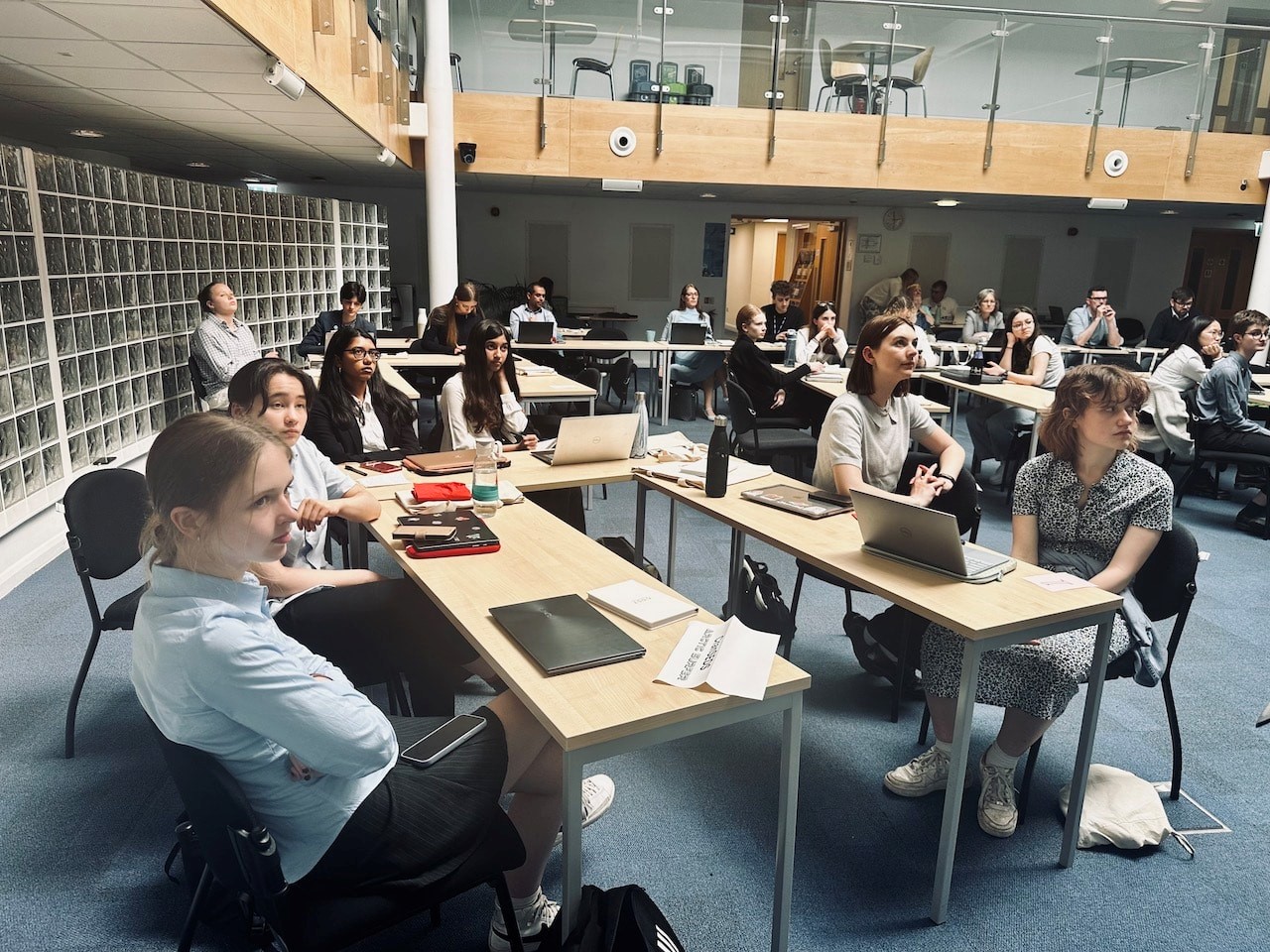Many congratulations to Nottingham Girls’ High School’s Space Technology Diploma candidates, Year 12 students Charlotte and Sara, who have completed their programming portfolios and both achieved distinction for their diploma.
GDST-wide diploma candidates travelled to Cranfield University to take part in the GDST Space Technology Programme end-of-year student conference. This took place at the university’s CMRI Gallery, co-hosted by the university’s CranSEDs (Cranfield Exploration and Development of Space) Team. Students were provided with an extraordinary opportunity on the day, to beta-test a new NASA MND student software tool interface for retrieving satellite data sets for machine learning AI processing, during a task assisted by Sutton High Space Tech Alumnae Mentors Farah and Priya.
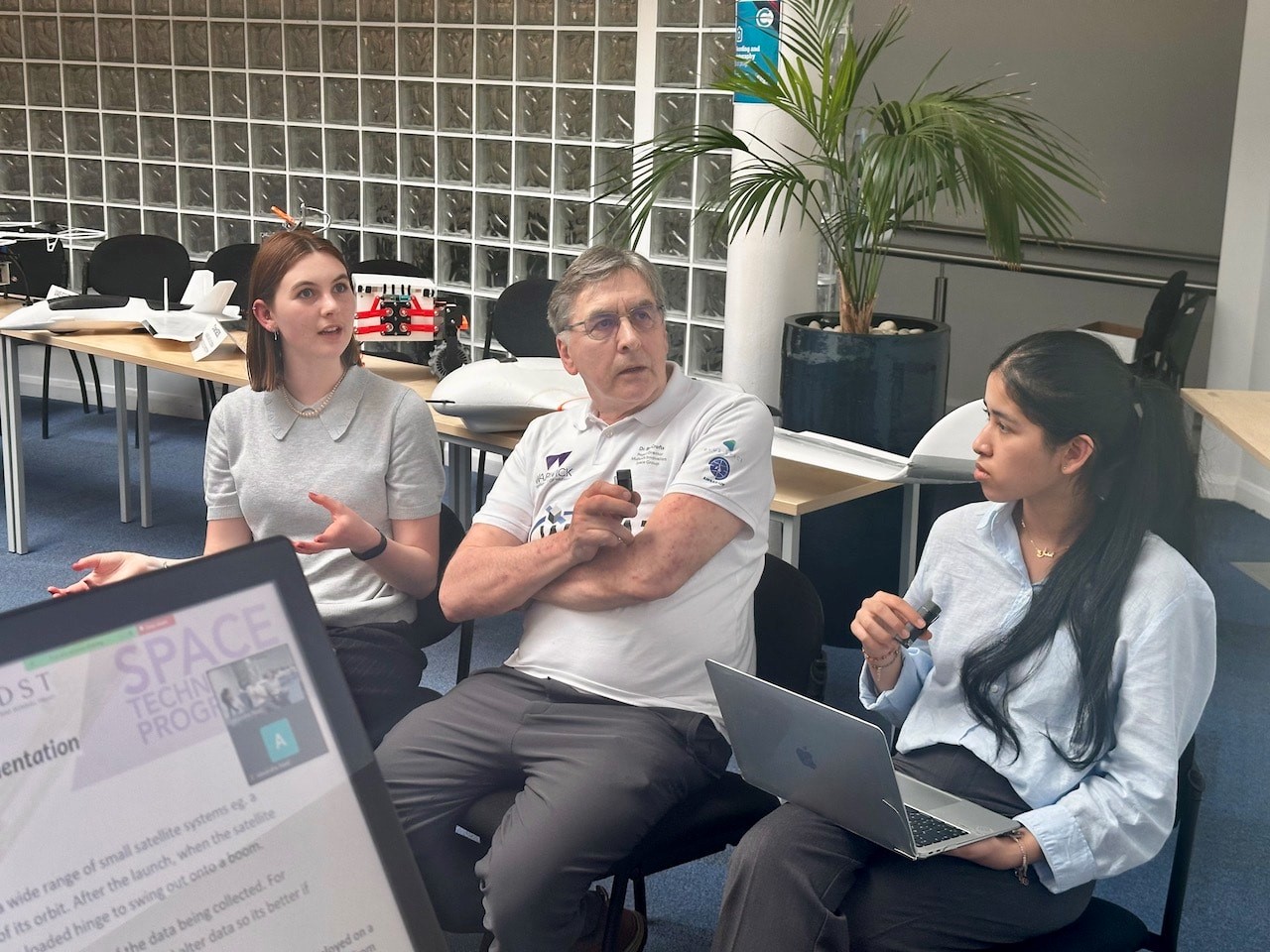
In the afternoon, students were treated to additional industry talks on the themes of software development in Earth science and robotics, model rocket optimisation, and spacecraft orientation.
GDST students presented their practical viva assessment efforts that day to the virtual panel of space industry professionals: Elizabeth Joyner (NASA Earth Science Data Systems), Angela Rizzi, Desiray Wilson, and Ashlee Autore (My NASA Data), Dr. Kevin Czajkowski (GLOBE Mission Earth), Dr. Brad Hegyi (NASA POWER), Lauren Childs-Gleason (NASA DRCS), Kenton Ross (NASA DEVELOP), and Samuel Nascimento de Melo Santos (RocketPy), as well as guest speakers Gilbert Tang (Cranfield University), Slesa Adhikari (NASA IMPACT), Guilherme Fernandes Alves (RocketPy), Syed Shane Raza Abidi (Cranfield CranSEDS), and Dr. Bill Crofts (Warwick University WUSAT).
The GDST Space Technology Diploma is an advanced, A Level computer science curriculum extension offering, for GDST school students with GCSE Year 11 Computer Science Python Programming ability (or equivalent). GDST Space Technology Diploma students each produce a Python programming portfolio which evidences their practical work delivered during the course of the year and is evaluated by the guest panel, in conjunction with a live practical task and viva assessment. The portfolio document also doubles as an interview tool, presenting skills developed during the scope of the programme, and containing samples of tutorial codes, visualisations and data interpretive explanations by the student.
Prescribed portfolio tasks cover project briefs such as remote data collection and transmission, predictive processing and visualisation of remote data, physical computing sensor robotics, computer vision, reduced deep space 2D array image and telemetry generation, and airborne device design simulations. Students opting for the distinction level certificate also have the opportunity to explore extended programming tasks using advanced software tools.
Supporting guest speakers participating in lectures to date have visited from institutions such as Warwick University Satellite Programme and NASA Langley Research Center, and have addressed topics such as spacecraft orientation, reaction wheels and Nadir sensing for orbiting satellites, to name but a few.
